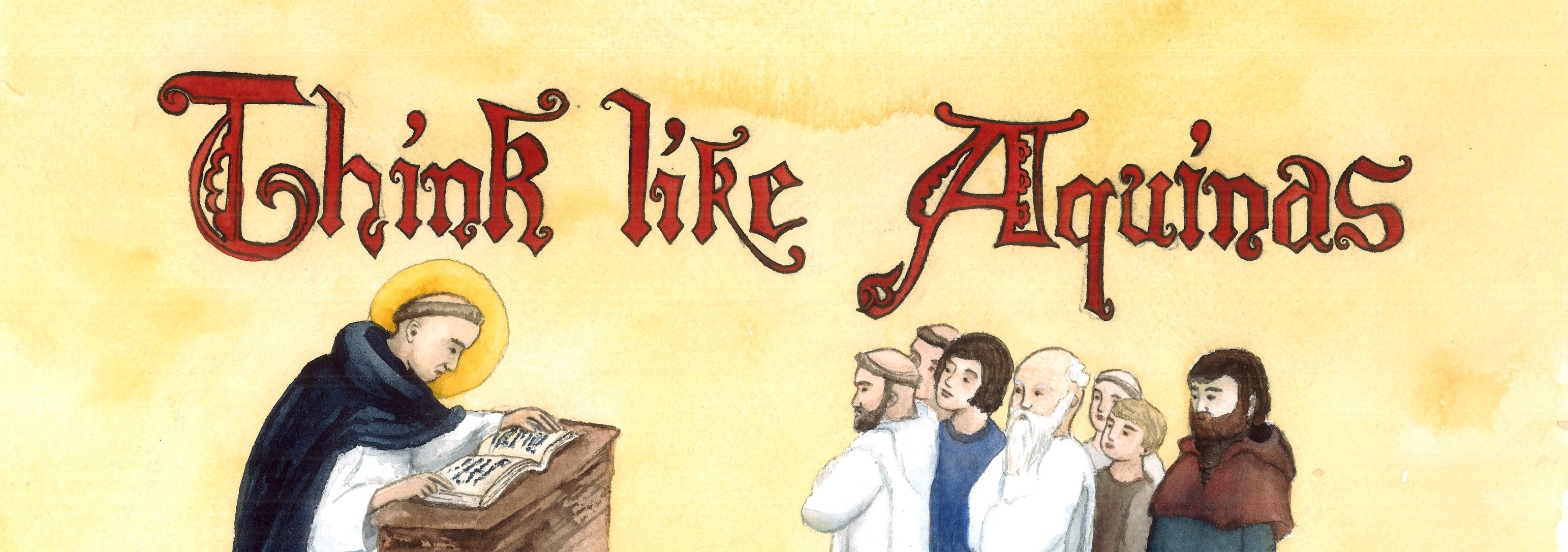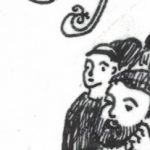What a great start to the semester! We made great progress toward spelling out the syllogisms in Compendium chapter 3. Each section found a slightly different way to present the arguments, but to help everyone consolidate their notes, I want type out one version of what was said.

Syllogisms in Chapter 3
The argument will unfold in two stages, a positive argument and then a reductio. We begin with some definitions: In an order of things moving and things moved, a thing moved by another is an instrument while a thing not moved by another is a first mover or principle agent. Note that these two definitions are exclusive and exhaustive, so that anything in the given order is either an instrument or a primary agent, but not both.
So first, St. Thomas argues positively as follows:
- All the things we see around us are in motion [apparent from the senses].
- All things in motion are moved by another [appeal to medieval worldview].
- All things moved by another are instruments [appeal to definition].
- Therefore: All the things we see around us are instruments.
But what would happen if we took this conclusion to an extreme by positing that not just what we see but absolutely all things are instruments? The statement “All things are instruments” implies that no things are primary agents; we can make this explicit by expanding the supposition to say: “All things are instruments without a primary agent.”
Taking this as the first premise of a reductio argument, we can reason like this:
- All things are instruments without a primary agent.
- All instruments without a primary agent do not move [appeal to the indocti].
- Therefore: All things do not move.
Now this conclusion contradicts our very first premise, namely that the things we see around us are in motion. So we have to deny the opening assumption of the reductio, “All things are instruments,” by affirming the truth of its contradictory: “Something is not an instrument.”
But this is the same thing as saying that something is a primary agent or first mover. Q.E.D.
Nailing down a key premise
If you look at the first (positive) syllogism, you’ll notice that St. Thomas justifies premise #2 with an appeal to medieval cosmology. As I mentioned in class, he gives a philosophical argument for this premise when he presents the same argument in the Summa, and in fact he gives a version of the same philosophical argument in our very next Compendium chapter. But for reference, here is how St. Thomas justifies that premise in the Summa (this is the same as the handout I gave you in class):
Everything which is in motion is moved by something else.
For nothing is in motion except according as it is in potency to that toward which it is moved, while it moves something else according as it is in act. For to move something is nothing other than to lead something out of potency into act, and nothing can be reduced from potency into act except by some being which is in act, as for example a thing which is actually hot, such as fire, makes a piece of wood, which is hot in potency, to be actually hot, and by this it moves and alters the wood.
Now, it is not possible that the same thing be simultaneously in act and in potency in the same respect, but only in different respects; for a thing which is hot in act cannot be hot in potency at the same time, but is cold in potency at the same time [as being hot in act].
Therefore it is impossible that, in the same respect and in the same way, something be both the thing causing motion and the thing moved, or that it move itself. Therefore everything which is in motion must be moved by something else.



Please note: I reserve the right to delete comments that are offensive or off-topic.